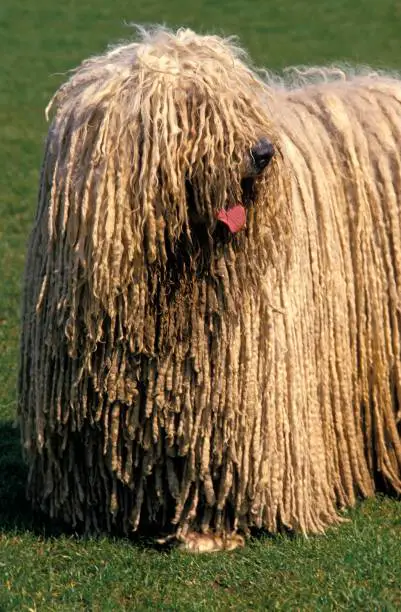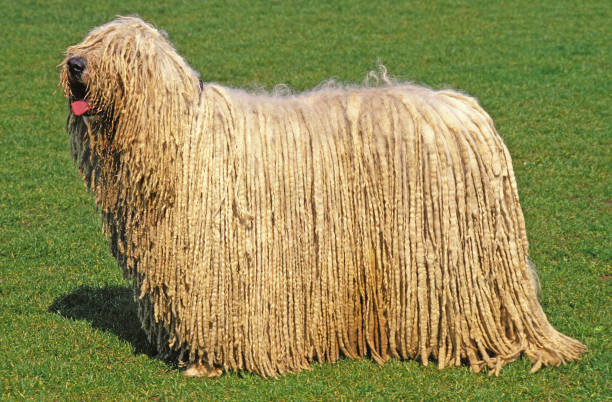The Komondor is a massively large Hungarian flock guardian coated with profuse white cords from head to tail. It is one of the world’s most identifiable breeds. Training the independent and protective Kom requires a firm, expert touch. Today’s Hungarian-language tip: Komondorok is the plural of Komondor. Let’s take a look at the dog now. We see a large and powerful guardian covered in a swath of white cords. A huge male with heavy bone, a deep chest, and tons of muscle can stand more than 27.5 inches tall and weigh more than 100 pounds. Despite their bulk, Komondorok are quick on their feet and move in large steps. Koms are tough to confuse with anything else due to their distinct appearance.
Komondor
Average sizes and life
expectancy of the breed.
Height
27.5 minimum inches (male)
25.5 minimum inches (female)
Weight
100 pounds or more (male)
80 pounds or more (female)
Life Expectancy
10-12 years
Breed Traits & Characteristics
About the Breed

Owning a dog is not just a privilege; it’s a responsibility. They depend on us for, at minimum, food and shelter, and deserve much more. When you take a dog into your life, you need to understand the commitment that dog ownership entails.
 Health
Health
Recommended Health Tests From the National Breed Club:
- Hip Evaluation
- Dentition Exam
- Ophthalmologist Evaluation
 Grooming
Grooming
 Exercise
Exercise
 Training
Training
 Nutrition
Nutrition
History
For decades, the Komondor has reigned supreme among Hungarian flock dogs. Koms patrols the pasture for sheep. They’re self-assured and tough enough to outrun wolves and other dangerous predators. The dreadlocks give the dog a cool, unique appearance, but they aren’t for show. They guard against harsh weather and sharp-toothed animals. Koms may also blend in with the sheep thanks to the cables, providing them the element of surprise.



